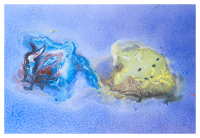Speaker
Brynmor Haskell
(The University of Melbourne)
Description
Neutron stars are one of the most exciting nuclear laboratories in the universe. With internal densities above nuclear saturation density and temperatures well below the Fermi temperature, they allow us to prove a regime of the strong interaction that is not accessible in terrestrial laboratories. In particular neutron stars are likely to be interesting sources of gravitational waves, which may be detected in the near future with ground based interferometers such as Advanced LIGO or Virgo.
In this talk I will focus on neutron stars in Low Mass X-ray Binaries and on gravitational waves emission due to unstable modes of oscillation of the star, in particular the so called ‘r-mode’. I will show how current electromagnetic observations of these systems are not consistent with a neutron star model that only includes neutrons, protons and electrons in the stellar interior, but require additional, ‘exotic’ physics.
I will discuss which mechanisms are compatible with the observations and which steps are needed (both from a theoretical and an observational point of view) to further constrain the physics of dense matter in neutron star interiors.
Summary
Neutron stars observations have the potential to constrain the physics of matter at high densities and low temperatures. In this talk I will discuss in particular the gravitational wave driven r-mode instability in accreting neutron stars. I will show how X-ray observations of these systems are not consistent with a simple model of a star that simply contains neutrons, protons and electrons, but require additional 'exotic' physics. I will discuss several possibilities and how to make progress towards further constraints on the physics of neutron star interiors.
Author
Brynmor Haskell
(The University of Melbourne)
